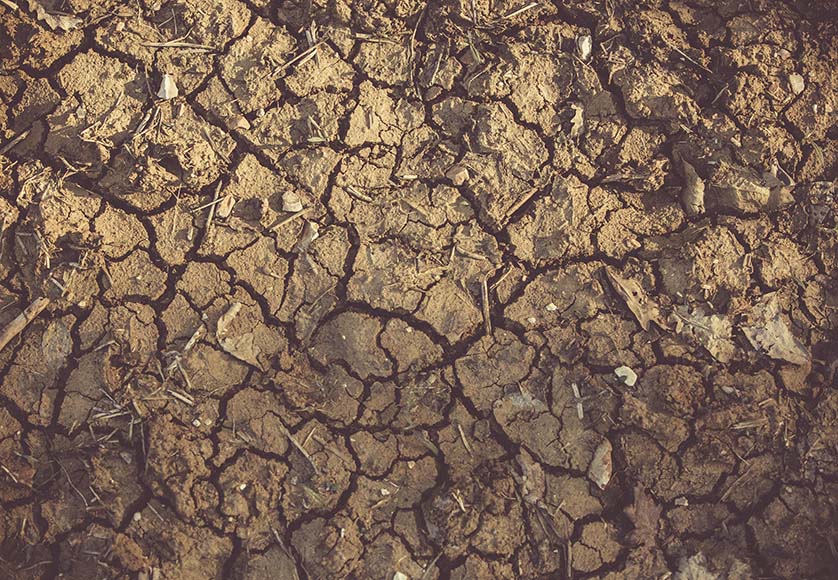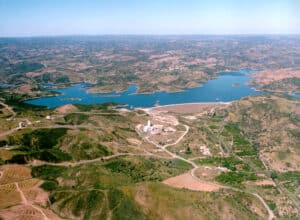Three Algarve boroughs among 43 affected
Portugal’s government has announced that it will recommend raising water tariffs for the largest consumers in 43 municipalities – including Vila do Bispo, Aljezur and Lagos – in the most critical situations to address the drought situation.
The measure was announced on Wednesday by the minister of environment and climate action, Duarte Cordeiro, at a press conference after a meeting of the permanent commission for the prevention, monitoring and follow-up of drought effects (CPPMAES).
After the meeting, the 11th this year to discuss the drought situation in mainland Portugal and measures to minimise the effects, the ministers of agriculture and food, Maria do Céu Antunes, and of the environment and climate action, Duarte Cordeiro, announced 11 more measures, in addition to 82 that had already been taken in previous meetings.
The increase in tariffs, Cordeiro explained, should be aimed at consumers of more than 15 cubic metres of water, as the average consumption of a family is around 10 cubic metres.
Cordeiro explained that the tariff increase is aimed at the 43 municipalities with less water, adding that “nothing prevents other” municipalities from doing the same. “I would recommend this measure to any municipality in the country,” he said.
For the 43 municipalities in the most critical situation, the government will also recommend restrictions on the use of water such as the temporary suspension of street washing, the watering of green spaces, the supply of decorative fountains and also foresees a “penalty system to penalise improper use of water,” Cordeiro added.
According to the list of municipalities, 40 are in the north and centre of the country, and three in the Algarve – Vila do Bispo, Aljezur and Lagos. These are councils that have a current water capacity that lasts for less than a year.
In relation to reservoirs with less than 20 percent of their capacity, the minister said, there will be tighter monitoring and the various uses of water (titles of use) of these reservoirs will be reviewed.
The aim will also be to extend the use of the dead volume of these reservoirs, he added, and the government will also pay “special attention” to protecting bodies of water in fire zones.
In relation to municipalities with less water, the minister said that water reduction taps would be installed in public buildings, with the support of the Environmental Fund, and measures would be taken in the area of water accounting, so that there are no “volumes of water lost or not considered for billing”.
The government also recommends that in these municipalities irrigation is done during the night, and that the industrial sector has projects for efficiency in water use.
“The country, as a whole, preserves public supply capacity for another two years,“ the minister stressed, stressing that the government is available to discuss structural solutions for the regions with the most water shortages, in addition to the one-off measures now announced, “to strengthen the resilience of the regions”.
Maria do Céu Antunes told journalists that the next meeting of the CPPMAES will take place within a month and reminded that the country is experiencing a “difficult situation” of drought, the “most severe of the century”, and that “the data is not encouraging”.
Even so, the minister said, of the 44 hydro-agricultural facilities, most (37) were able to irrigate and provide water for animals, and in the other seven reservoirs there were “some restrictions”.
Currently, she said, there are 49 reservoirs with water at less than 40 percent and four below 20 percent of capacity, in which the government recommends that irrigation should take place during the night.
The prolonged drought on the mainland is affecting crops, has led to cuts in water use and forced villages to be supplied by water tank trucks.
From October last year until August it rained almost half of what would be normal, according to the national meteorological institute, IPMA.
At the end of July, the IPMA placed 55.2 per cent of the mainland in a situation of severe drought and 44.8 in a situation of extreme drought. No mainland location was in a normal situation, or in weak drought or even in moderate drought.
Source: Lusa


























